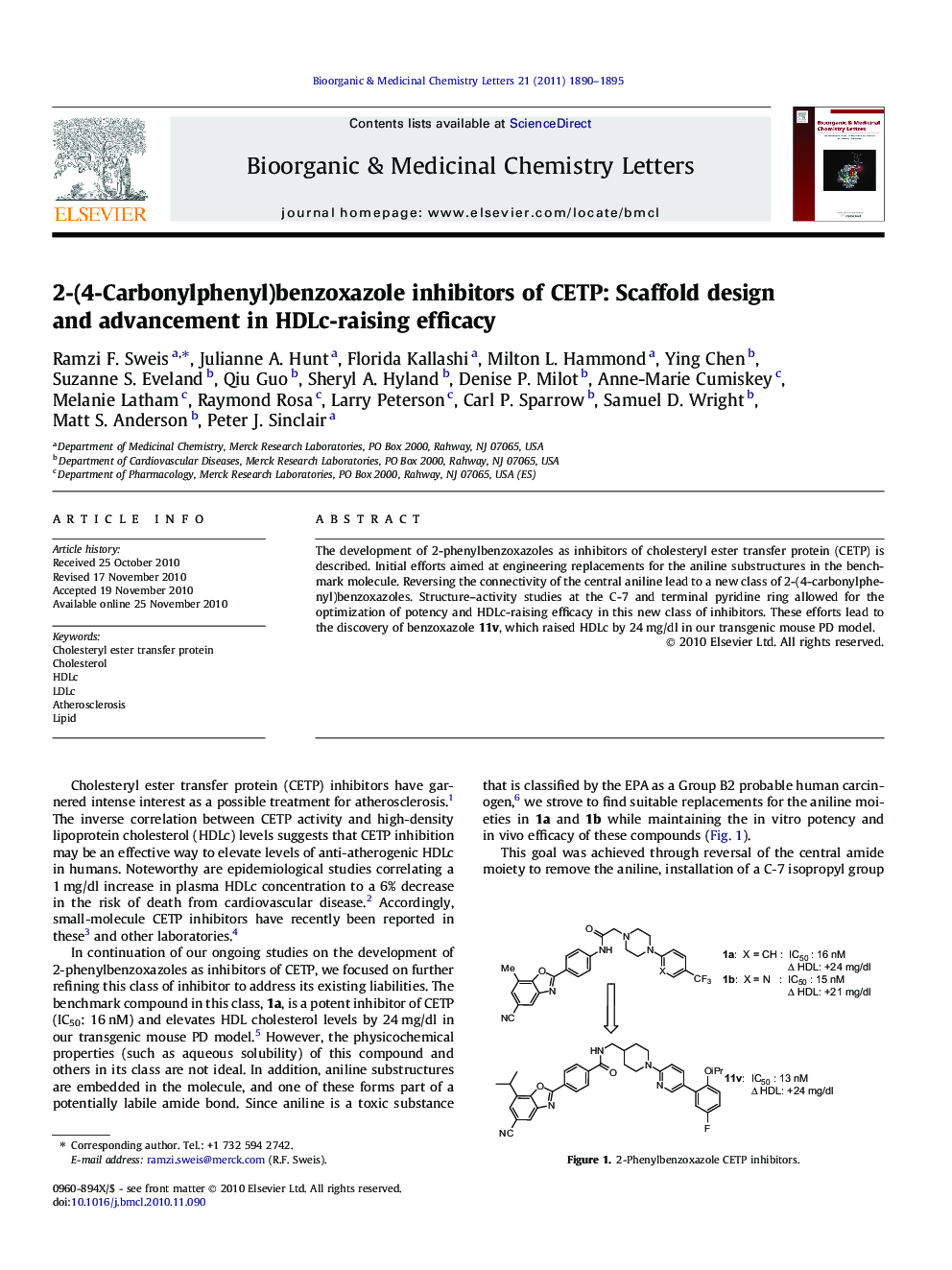| Article ID | Journal | Published Year | Pages | File Type |
|---|---|---|---|---|
| 1371465 | Bioorganic & Medicinal Chemistry Letters | 2011 | 6 Pages |
The development of 2-phenylbenzoxazoles as inhibitors of cholesteryl ester transfer protein (CETP) is described. Initial efforts aimed at engineering replacements for the aniline substructures in the benchmark molecule. Reversing the connectivity of the central aniline lead to a new class of 2-(4-carbonylphenyl)benzoxazoles. Structure–activity studies at the C-7 and terminal pyridine ring allowed for the optimization of potency and HDLc-raising efficacy in this new class of inhibitors. These efforts lead to the discovery of benzoxazole 11v, which raised HDLc by 24 mg/dl in our transgenic mouse PD model.
Graphical abstractCompound 11v was the first in its series found to be a potent inhibitor of CETP (IC50 = 16 nM), with robust in vivo efficacy (ΔHDLc = 24 mg/dL) and absent of any potentially liable aniline-containing substructures.Figure optionsDownload full-size imageDownload as PowerPoint slide
